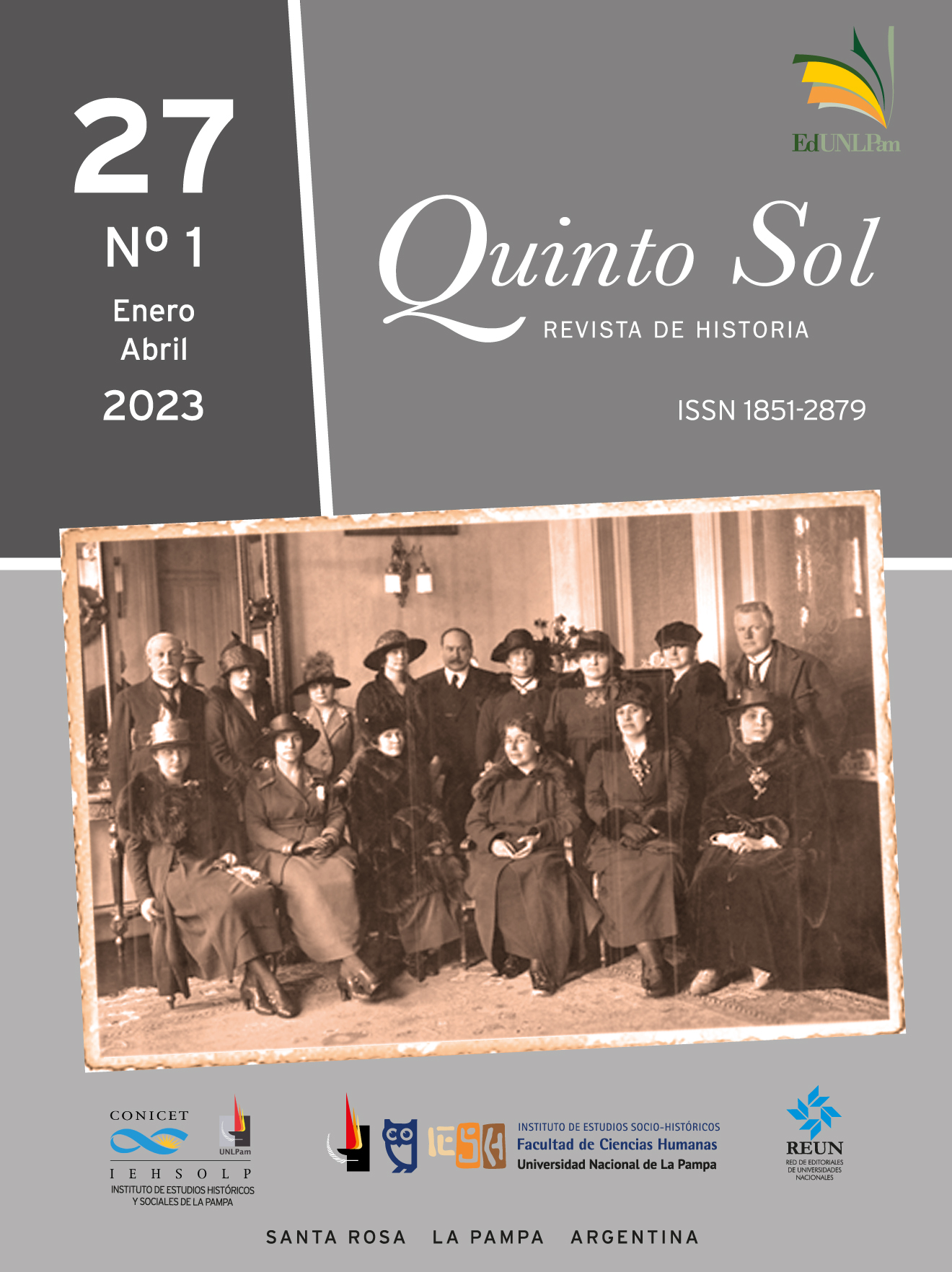Workers' identities and paternalistic social relations in the cement industry. Calera Avellaneda S.A. (Olavarría) and Loma Negra S.A. (Villa Cacique-Barker)
DOI:
https://doi.org/10.19137/qs.v27i1.5793Keywords:
identities, paternalism, workers, cement industryAbstract
In the following article we present a comparison between two companies dedicated to the production of cement located in the province of Buenos Aires, Argentina. We examine the repetition of general features and unique characteristics of each of the cases, to then analyze the construction of certain social representations based on the labor relations that unfolded in this context.
The company was conceived as a large patriarchal family, where the bosses exercised an authority that went far beyond the workplace, to extend to all aspects of daily life. The discourses that were constructed from them delimited certain representations, charged with a strong symbolic content, which collaborated to reinforce the labor relationship. In this way, it was shown that the integration of workers of different nationalities into the production system did not endanger the union, since the paternalistic labor and social policy managed to build a strong local identity, expressed in the feeling of belonging to the factory and its workers village.
Downloads
References
Babiano Mora, J. (1998). Paternalismo industrial y disciplina fabril en España (1938-1958). Madrid: Concejo Económico y Social.
Ballent, A. (2002). Las huellas de la política. Vivienda, ciudad, peronismo en Buenos Aires, 1943 – 1955. Buenos Aires, UNQ: Prometeo.
García, M. (1998). La villa von Bernard. Entre violetas, aromos y recuerdos. Olavarría: Edición del autor.
Gaudemar, J. P. (1981). “Preliminares para una genealogía de las formas de disciplina en el proceso capitalista de trabajo.” En Gaudemar, J. P. Espacios de poder. Madrid: Ediciones de la Piqueta.
Guerrero, E. (1994). "Reestructuración económica e impacto de las nuevas tecnologías en asentamientos de rango menor. Estudio de caso: Barker y Villa Cacique". Tesis de licenciatura, UNCPBA, Carrera de Geografía. Tandil.
James, D. (1990). Resistencia e integración: el peronismo y la clase trabajadora argentina (1946-1976). Buenos Aires: Sudamericana.
Leite Lopes, J.S. (2011). El vapor del Diablo. El trabajo de los obreros del azúcar. Buenos Aires: Antropofagia.
Neiburg, F. (1988). Fábrica y Villa Obrera: historia social y antropología de los obreros del cemento. Buenos Aires: CEAL.
Sierra Álvarez, J. (1990). El obrero soñado. Ensayo sobre el paternalismo industrial (Asturias, 1860-1917). Madrid: Siglo XXI.
Thompson, E. (1979). Tradición, revuelta y conciencia de clase. Estudios sobre la crisis de la sociedad pre industrial. Barcelona: Crítica.
Downloads
Published
Issue
Section
License
When submitting their contributions, authors must declare that they have the permission of the file or repository where the documents that are attached to the work were obtained, whatever their format (unpublished manuscripts, images, audiovisual files, etc.). Such permission authorizes their publication and reproduction, releasing the journal and its editors from any liability or claim from third parties.
Likewise, authors must adhere to the Creative Commons license called "Attribution - Non-Commercial CC BY-NC-SA", through which the author allows copying, reproducing, distributing, publicly communicating the work and generating derivative works, as long as the original author is properly quoted and acknowledged. It is not allowed, however, to use the work for commercial purposes. Authors may establish additional agreements for the non-exclusive distribution of the version of the paper published in the journal (for example, placing it in an institutional repository or publishing it in a book), with the acknowledgment of having been published first in this journal.
The publication of content in this journal does not imply any royalty or charge for taxpayers.
Quinto Sol adheres to the DORA (Declaration on Research Assessment) signed in San Francisco, California, on December 16, 2012, and to the Declaration of Mexico (Joint Declaration LATINDEX - REDALYC - CLACSO - IBICT).










4.png)
2.png)












_(2).png)


1.jpg)



1.jpg)





